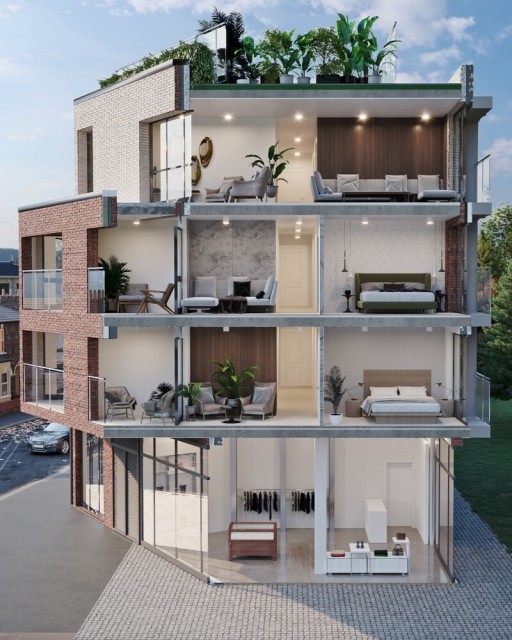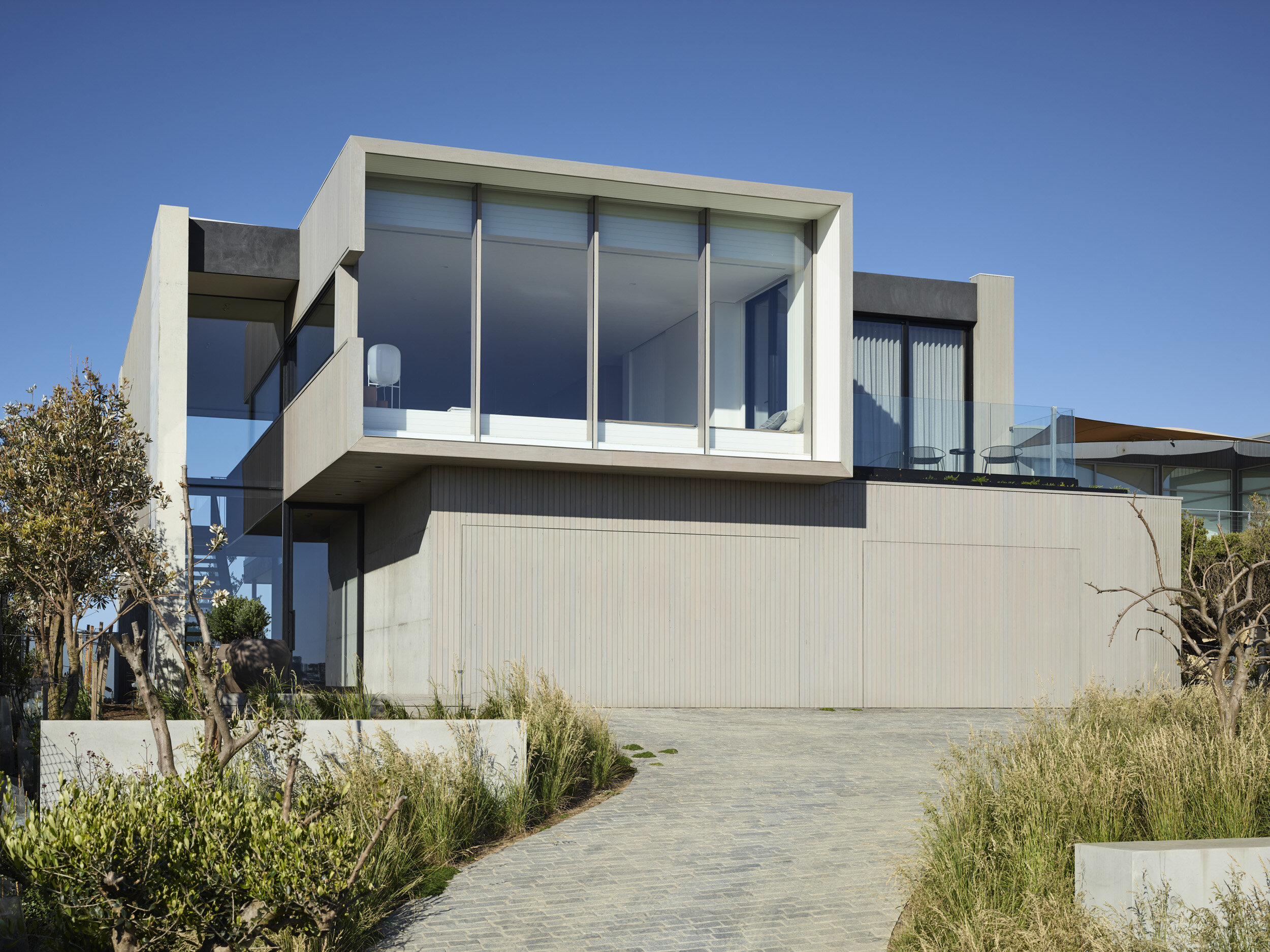Design Your Perfect Home with Skilled Residential Architecture Homes Experts
Design Your Perfect Home with Skilled Residential Architecture Homes Experts
Blog Article
Leading Fads in Residential Architecture You Should Learn About
As residential architecture remains to evolve, several compelling patterns are shaping the method we create and populate our home. Trick growths such as sustainable structure methods, the combination of wise home innovation, and the surge of modular homes underscore a considerable change towards both capability and environmental responsibility. Furthermore, concepts like open strategy living and biophilic design are redefining our interaction with room and nature. Understanding these trends not only educates layout selections yet likewise exposes broader effects for way of life and area - residential house architect. What might these technologies suggest for the future of property living?
Sustainable Building Practices
An enhancing number of household jobs are welcoming lasting building practices, driven by an expanding recognition of environmental impact and energy effectiveness. This change is characterized by the integration of green products, energy-efficient designs, and innovative building approaches. Property owners and building contractors are progressively focusing on making use of renewable energies, such as bamboo and recycled steels, which not only decrease the carbon impact but additionally boost the longevity and visual allure of homes.
Incorporating energy-efficient systems is an additional crucial aspect of sustainable building - residential house architect. Features such as high-performance insulation, energy-efficient home windows, and photovoltaic panels are ending up being criterion in new household styles. These elements not just add to reduced energy consumption but also offer significant long-lasting savings for house owners
Additionally, the layout of sustainable homes usually highlights all-natural light and air flow, reducing the dependence on artificial illumination and climate control systems. Landscape design practices, such as xeriscaping, more advertise sustainability by lessening water use.
As the demand for lasting living options remains to increase, the residential architecture sector is poised to adapt and innovate, making sure that future homes are not only eco responsible however additionally comfy and practical for their residents. - residential house architect
Smart Home Technology
Smart home technology is reinventing the method homeowners engage with their home, enhancing comfort, energy, and safety administration. This ingenious approach integrates various tools and systems, permitting customers to regulate their homes from another location or through automated processes. Central to this trend is the use of smart gadgets such as thermostats, lighting, security electronic cameras, and home appliances, all attached using the Internet of Points (IoT)
One of the most enticing attributes of smart home technology is the capacity to personalize settings for ideal energy effectiveness. Property owners can keep track of power usage and change lighting, cooling, and home heating based upon their regimens, dramatically minimizing energy costs. Advanced safety systems geared up with clever locks and surveillance cameras give peace of mind, enabling remote monitoring and alerts to prospective safety and security breaches.
Assimilation with voice-activated aides improves customer experience, allowing homeowners to regulate devices with simple voice commands. As modern technology proceeds to evolve, the possibility for wise home systems to boost lifestyle expands, making them an essential consideration in contemporary residential architecture. Ultimately, clever home innovation is not simply a fad but a basic shift towards more intelligent living settings.
Open Concept Living
Open idea living has emerged as a defining function in modern property style, characterized by the elimination of standard barriers between spaces. This design approach advertises fluidity and connection within the home, enabling a seamless change between areas such as the cooking area, eating, and living spaces. By removing walls and dividings, open principle formats create a sense of space, cultivating a welcoming ambience that enhances social interaction.

Furthermore, this strategy to property design straightens with minimalism, concentrating on practical simplicity and aesthetic comprehensibility. Homeowners value the versatility of these formats, which can be conveniently adapted to mirror personal design through furnishings setup and design. As open principle living remains to obtain traction, it stays a testament to advancing household characteristics and the desire for homes that improve link and comfort.
Biophilic Style
Biophilic layout has come to be increasingly considerable in domestic style, emphasizing the innate link between people and nature. This layout ideology seeks to incorporate all-natural elements into living rooms, thereby promoting a feeling of health and improving the top quality of life for residents. By including attributes such as natural light, greenery, and organic materials, biophilic style advertises an unified partnership in between interior settings and the natural world.
Secret components of biophilic layout include large windows that supply unblocked sights of exterior landscapes, living wall surfaces that introduce plant into interiors, and open layout that motivate air flow and all-natural light infiltration. Water attributes, both inside and outside the home, offer to create soothing atmospheres and enhance sensory experiences.
Moreover, the usage of lasting products not just supports ecological stewardship yet likewise contributes to healthier interior air top quality. As recognition of ecological issues boosts, homeowners are increasingly focusing on styles that mirror their connection to nature. Basically, biophilic style not only elevates visual allure yet likewise addresses mental and emotional needs, making it a crucial fad in modern residential architecture.
Modular and Prefab Homes

In addition, modular and prefab homes are made with sustainability in mind. Numerous producers use environment-friendly materials and energy-efficient systems, such as photovoltaic panels and progressed insulation methods, adding to lowered energy consumption and reduced energy costs for house owners. The flexibility of style choices allows for modification, providing to diverse practical demands and visual choices.
As the demand for budget friendly real estate remains to climb, prefab and modular homes offer a feasible remedy, dealing with both financial and environmental difficulties. Communities are increasingly recognizing the capacity of these structures, incorporating them right into urban and country settings. Generally, the trend toward modular and prefab homes represents a change towards more lasting, efficient, and versatile living atmospheres, making them an essential element of contemporary residential style.
Conclusion
Lasting building practices and wise home modern technologies boost performance and comfort, while open concept living and biophilic style foster social communication and a link to nature. The surge of prefab and modular homes offers customizable and economical solutions, showing a broader change towards useful and accountable living.
Key developments such as sustainable structure methods, the integration of smart home innovation, and the surge of modular homes emphasize a significant shift towards both functionality and ecological duty.The surge of modular and prefab homes has actually changed the household design landscape, offering innovative remedies for reliable and lasting living.In addition, prefab and modular homes are designed with sustainability in mind. On the whole, the trend toward modular and prefab homes represents a shift toward much more sustainable, reliable, and versatile living atmospheres, making them a critical element of modern residential design.
Lasting building techniques and smart home web link modern technologies boost performance and benefit, while open idea living and biophilic design foster social communication and a connection to nature.
Report this page